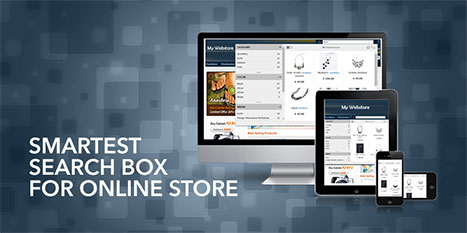When e-commerce search works, it’s fast, convenient and efficient. It’s no wonder that so many users prefer searching over clicking categories. Unfortunately, our recent large-scale usability study and top-50 benchmark of e-commerce search finds that search often doesn’t work very well.
On-site search is a key component of almost any e-commerce website. That’s why we at eye-cathy.com have invested months conducting a large-scale usability study, testing the e-commerce search experience of 19 major e-commerce websites with real-world end users.
We’ve boiled our findings down to 60 usability guidelines for e-commerce search design and logic. Based on these findings, we’ve benchmarked the search experience of the 50 top-grossing US e-commerce websites, rating each website across all 60 search usability parameters. In this article, we’ll present some of the findings from this vast research data set and explore the state of e-commerce search.
Benchmarking the search experience of the 50 top-grossing US e-commerce websites reveals a surprisingly grim state of affairs. Here’s a walkthrough of just a handful of the most interesting statistics:
- 16% of e-commerce websites do not support searching by product name or model number, despite those details appearing on the product page! An additional 18% of websites provide no useful results when the user types just a single character wrong in the product’s name.
- 70% require users to search by the exact jargon for the product type that the website uses, failing to return relevant products for, say, “blow dryer” if “hair dryer” is typed, or “multifunction printer” if “all-in-one printer” is typed.
- Searches with symbols and abbreviations are not supported by 60% of e-commerce websites. For example, the websites do not map the double quotation mark (often substituted for the double prime symbol: ″) or “in” to “inch.”
- Autocomplete suggestions are found on 82% of e-commerce websites. While some implementations greatly enhance the search experience, 36% of implementations do more harm than good.
- Only 34% allow users to easily iterate on their query by prefilling it in the search field on the results page, despite the fact that, according to our tests, users frequently need to iterate on their query — on average, 65% of test subjects required two or more query attempts during testing.
- Only 40% of websites have faceted search, despite it being essential to e-commerce search because it is the foundation of contextual filters.
- While an e-commerce website eases navigation by offering two types of breadcrumbs, 92% of the top-50 websites display only one breadcrumb type or none at all.
- Below, we’ll walk through each of the above statistics and provide insight on how to improve the search experience and success rate on your e-commerce website. We’ll round the article off with a general analysis of the current state of e-commerce search.

